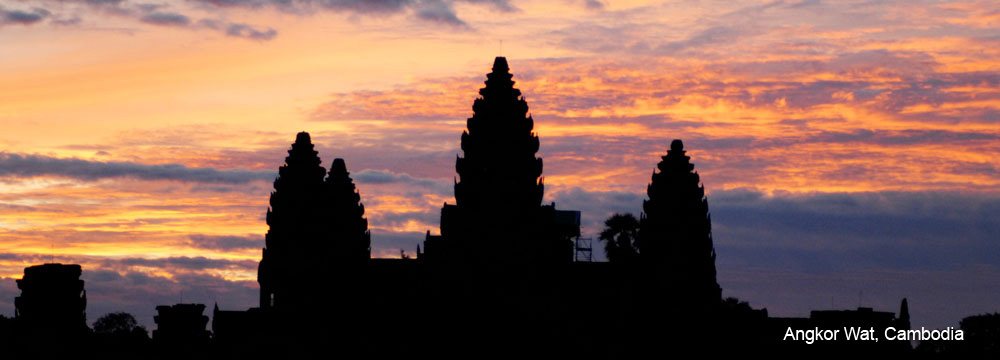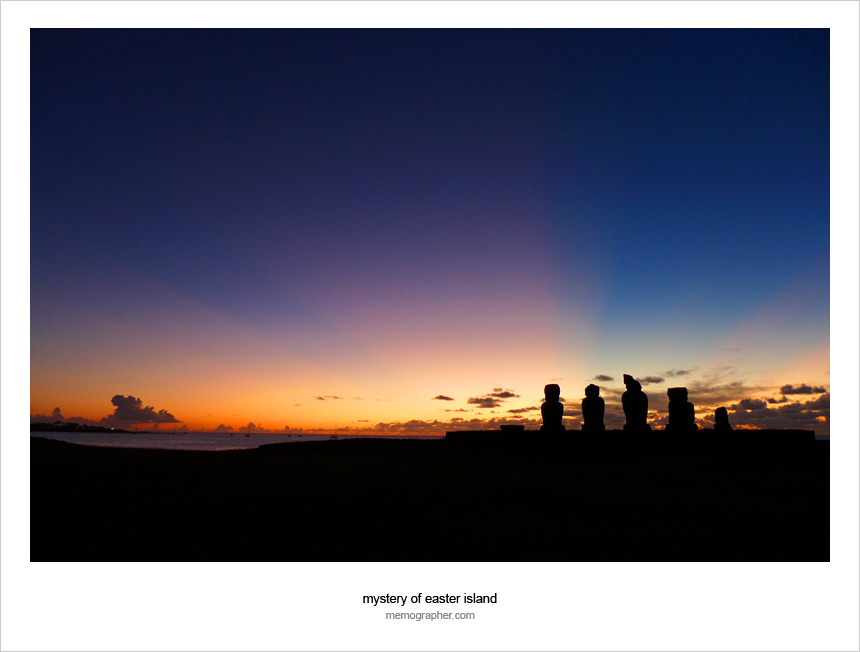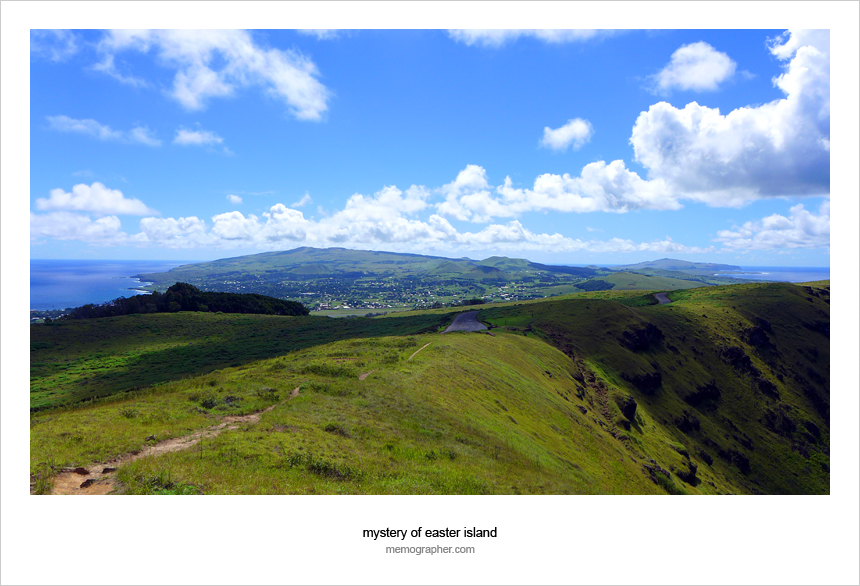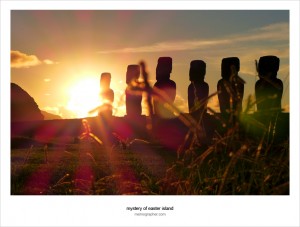Dedicated to the 13th Anniversary of my Intercontinental travel.
Easter Island (Rapa Nui) is an island in the southeastern Pacific Ocean, which is famous for its 887 extant monumental statues, called moai. It is the most remote inhabited island in the world. The nearest continental point lies in central Chile, at 3,512 kilometres (2,182 mi). The name “Easter Island” (Isla de Pascua) was given by the island’s first recorded European visitor, the Dutch explorer Jacob Roggeveen, who encountered it on Easter Sunday, April 5, 1722. My plan was to visit Easter Island on Easter Sunday, March 31st this year. Unfortunately, I had to leave two days earlier.
I truly believe that Rapa Nui civilization and Inca Empire were related. That’s why I wanted to explore Peru (Inca) and Easter Island (Rapanui) on the same trip. The scientists don’t know exactly where the original Easter Islanders (Rapanui) have come from. Some say they were Polynesians because of similarities in their languages and DNA from 12 skeletons found on Easter Island. Others find similarities in workmanship of Rapanui and Inca. There are stone walls on the island constructed in unique “Inca style”. Also the islanders were growing Andean (Inca) sweet potatoes… In my opinion, Inca and Rapanui have been helped by aliens or they were aliens! That’s why we find the similarities. Otherwise, explain how Rapanui transported and erected their multi-ton statues moai using only human labor and primitive tools(?) The tallest moai erected was almost 10 meters (33 ft) high and weighed 82 tons (181,000 lbs); the heaviest erected was moai at Ahu Tongariki, weighing 86 tons (190,000 lbs); and one unfinished sculpture, if completed, would have been approximately 21 meters = 69 ft tall (it’s a 7-story building) with a weight of about 270 tons (!!!) = 595,000 lbs…
For the convenience of those who are going to Easter Island I have created a Large Printable Map of Easter Island (Rapa Nui).
Click on image to view full size.













































Easter Island is such a beautiful and interesting place. I really wanted to check it out as part of my South America trip, but since I’d spent my spare budget on the Galapagos it wasn’t to be. I love your photos.
Arianwen recently posted..Dona Marta favela: is it safe?
Thanks, Arianwen. Yes, Easter Island is beautiful and interesting. I would recommend 4-5 days to fully enjoy it. Sorry you can’t go at this time. But, Galapagos are great too! Awesome photo opportunities. I would love to go there. Are you going to the continental Ecuador as well? I’ll be following your blog.
memographer recently posted..Machu Picchu – The Lost City of The Incas
I’ve already been. I’m back in the UK now. Mainland Ecuador was fantastic though. Too many people rush through it. I have plenty of posts on places in Ecuador – you can check the link in the sidebar if you’re interested :)
Arianwen recently posted..Dona Marta favela: is it safe?
I’ve thought you are in planning. Checking your posts from Ecuador… Great adventures!
A great series, Alex, and one that reminds me of my own visit there many years ago.
Andrew Graeme Gould recently posted..Santiago, Chile: Cerro Santa Lucía
Thanks, Andrew. I don’t think there are many changes since you were there… same moai, same mountains, same ocean ;)
Memographer recently posted..Rosalynn’s Flowers at Jimmy’s Center
WoW fabulous photos, I so want to visit Easter Island one day, it looks magnificent. I only visited Peru & Ecuador so far in South America but I definitely want to return cause there are so many other places I still would love to see in South America.
Freya recently posted..The Quintessential Guide to Jaipur
Thanks, Freya! Yes, definitely, you should go. I am also going back one day ;)
Memographer recently posted..Old Bangkok Made of Gold
Amazing job capturing the quiet beauty and majestic mystery of Easter Island.
The Caffeinated Day Tripper recently posted..Riding Shotgun with Kerouac: 15 Inspiring Quotes on Travel From the Greats of Poetry, Philosophy and Literature
Thank you, Erin! Glad you like it.
Memographer recently posted..Romans Made of Stone and Marble